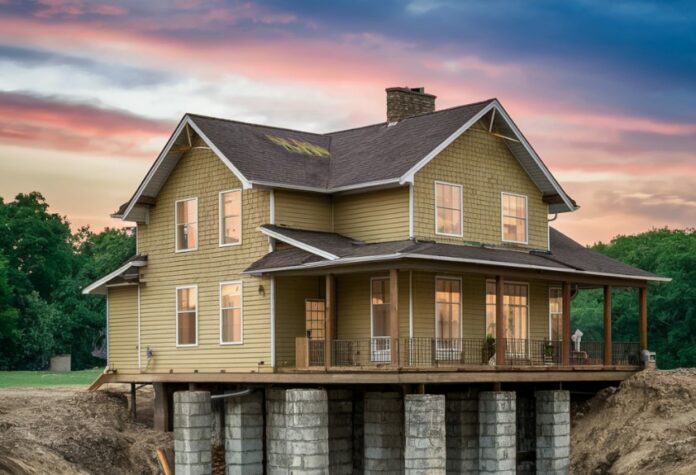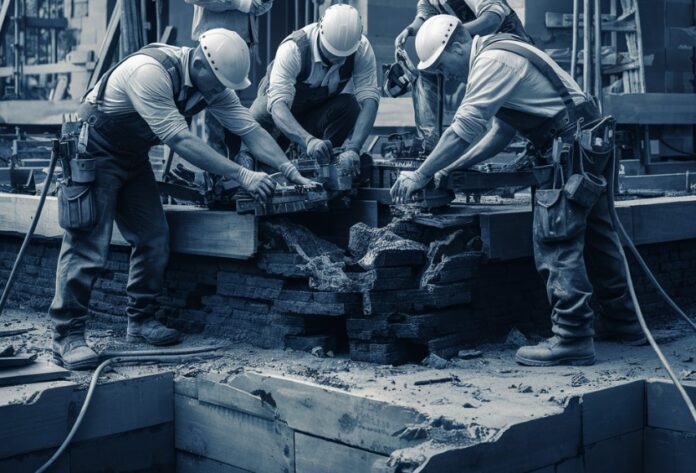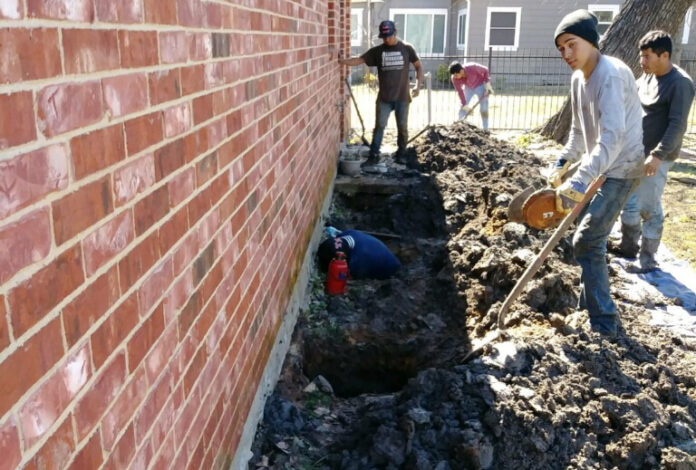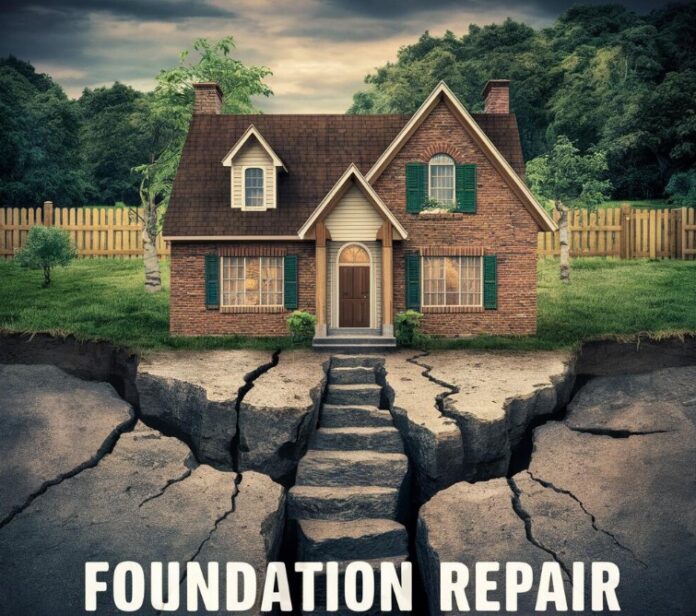A stable foundation is essential for any structure, providing the support necessary to keep the building intact. However, foundations can deteriorate over time, leading to severe structural issues.
Identifying early signs of foundation problems is crucial to prevent potential collapse and ensure the safety of your home.
Also, finding the right service is crucial if you don’t have skills and experience. Look for professionals in your area. For example, foundation repair St. Catharines.
Recognizing the Early Warning Signs


One of the most critical steps in foundation repair is recognizing the early warning signs of foundation issues. These can include:
- Cracks in Walls and Floors: One of the most obvious signs of foundation trouble is the appearance of cracks in your walls, floors, or even the ceiling. Vertical, horizontal, or stair-step cracks in the exterior bricks or the interior drywall can all indicate foundation movement.
- Doors and Windows That Stick: If your doors and windows are suddenly difficult to open or close, this might indicate foundation settlement. Misaligned frames and gaps around windows and doors are also red flags.
- Uneven Floors: If you notice that your floors are no longer level, this could be a sign of foundation issues. Sagging or sloping floors can indicate that the foundation has shifted or settled unevenly.
- Water Intrusion: Water pooling around your foundation or in your basement can cause soil erosion, leading to foundation problems. Persistent moisture issues should be addressed immediately to prevent further damage.
Common Causes of Foundation Problems
Understanding the causes of foundation problems can help in taking preventive measures. Some common causes include:
- Soil Movement: Expansive clay soils, common in many areas, can swell and shrink with moisture changes, leading to foundation movement.
- Poor Drainage: Inadequate drainage can lead to water pooling around your foundation, causing soil erosion and weakening the foundation structure.
- Tree Roots: Large trees near your home can cause foundation issues as their roots grow and displace the soil.
- Construction Errors: Poor construction practices, such as inadequate soil preparation or improper foundation design, can lead to future foundation problems.
Assessing the Severity of Foundation Damage


Once you identify signs of foundation problems, it’s essential to assess the severity of the damage. A professional foundation inspection can provide a detailed assessment of the situation. Structural engineers and foundation repair specialists use various methods to determine the extent of the damage and recommend appropriate solutions.
Foundation Repair Solutions
Several foundation repair methods can address different types of foundation problems. Some common repair solutions include:
- Piering and Underpinning: This involves driving steel piers into the ground beneath the foundation to provide additional support and lift the structure back to its original level.
- Slab Jacking: This technique involves injecting a grout mixture under the foundation to lift and stabilize the slab.
- Wall Anchors: For foundation walls that are bowing or leaning, wall anchors can be installed to provide lateral support and prevent further movement.
- Waterproofing: Addressing drainage issues and waterproofing the foundation can prevent future water damage and soil erosion.
Preventive Measures
Preventing foundation problems involves regular maintenance and addressing potential issues before they become severe. Some preventive measures include:
- Regular Inspections: Conduct regular inspections of your home’s foundation and surrounding areas to identify early signs of trouble.
- Proper Drainage: Ensure that your property has adequate drainage to prevent water pooling around the foundation.
- Tree Management: Manage trees and vegetation near your home to prevent root damage to the foundation.
- Soil Maintenance: Maintain consistent moisture levels in the soil around your foundation to prevent expansive soil movement.
When DIY Solutions are Feasible
For minor foundation issues, such as small cracks (less than 1/8 inch wide), you can often handle repairs yourself. Here are some DIY solutions:
- Crack Repair Kits: These kits are readily available at hardware stores and typically include epoxy or polyurethane foam, which can seal small cracks effectively.
- Water Management: Ensuring proper drainage around your home can prevent water from seeping into the foundation. Clean gutters, extend downspouts, and slope the ground away from the foundation.
- Soil Moisture Control: In areas with clay soil, maintaining consistent moisture levels around your foundation can prevent excessive expansion and contraction, reducing stress on the foundation.
These solutions are suitable for minor issues but have their limitations.
Recognizing When to Call a Pro
While DIY solutions can be effective for minor problems, there are situations where professional help is necessary. If you need assistance, check out foundation crack repair like the one we mentioned previously.
- Large Cracks: Cracks wider than 1/8 inch, especially those that are horizontal or stair-stepping in nature, indicate more severe issues that require expert evaluation and repair.
- Bowing Walls: If your basement or crawl space walls are bowing or bulging, it suggests significant structural issues. Professionals can assess the damage and implement corrective measures, such as wall anchors or bracing.
- Persistent Water Issues: Ongoing water intrusion, even after improving drainage and moisture control, necessitates professional intervention. Experts can install sump pumps, interior drainage systems, and other solutions to manage water effectively.
- Foundation Settlement: Noticeable settling, where one part of your house is lower than the other, requires professional assessment. This may involve underpinning or piering to stabilize the foundation.
The Risks of Ignoring Major Issues
Attempting to fix major foundation problems on your own can lead to costly mistakes. Inadequate repairs can exacerbate the issues, leading to more extensive damage and higher repair costs in the future. Additionally, improper handling of structural repairs can compromise the safety of your home.
Conclusion


Knowing when to give up on DIY foundation repair and call a professional is crucial for maintaining the integrity of your home. While minor issues can be handled with some DIY effort, significant problems require the expertise of a professional. Recognizing the signs of major foundation issues and seeking professional help can save you time, money, and potential headaches in the long run. If you’re unsure about the severity of your foundation problems, it’s always better to err on the side of caution and consult an expert.







